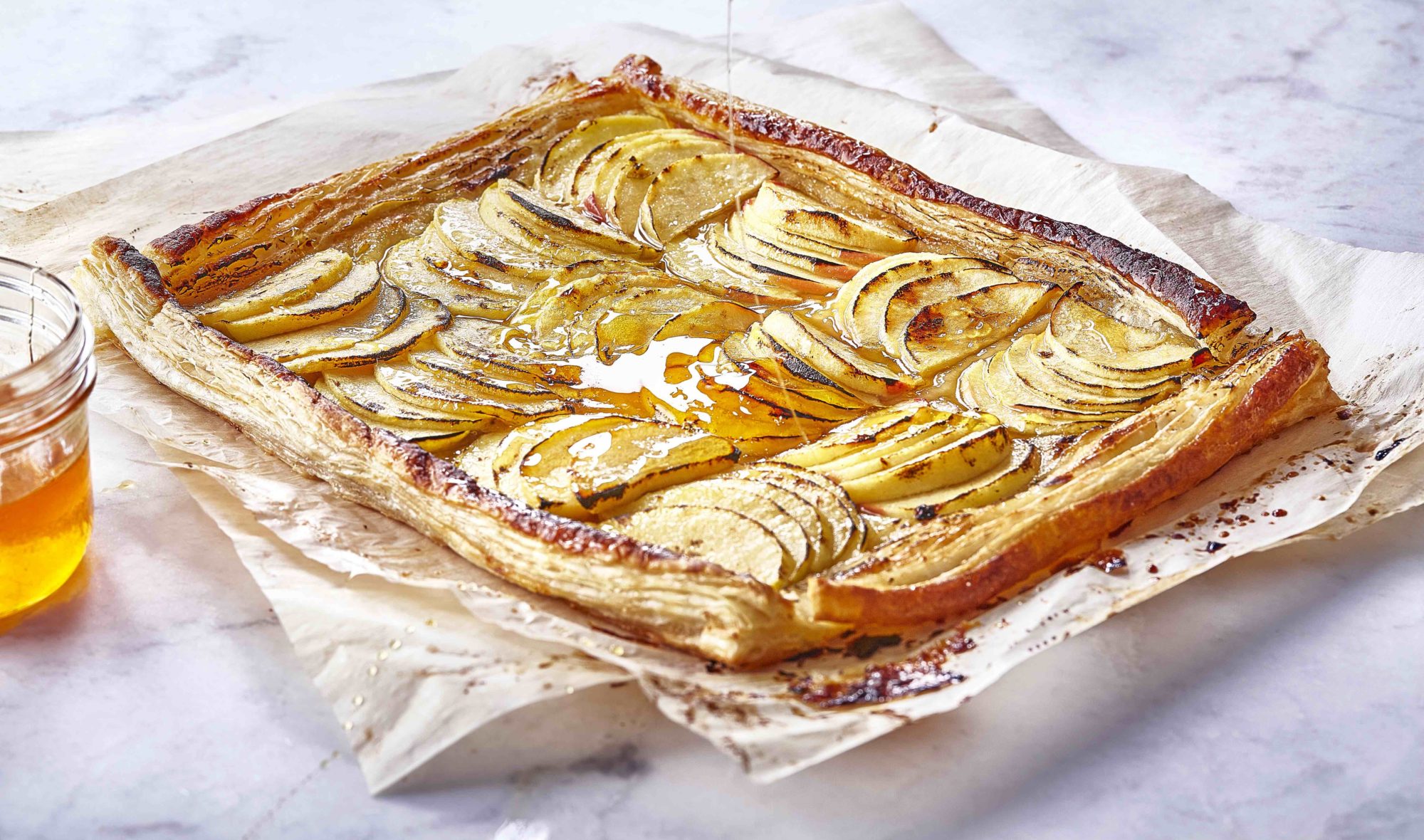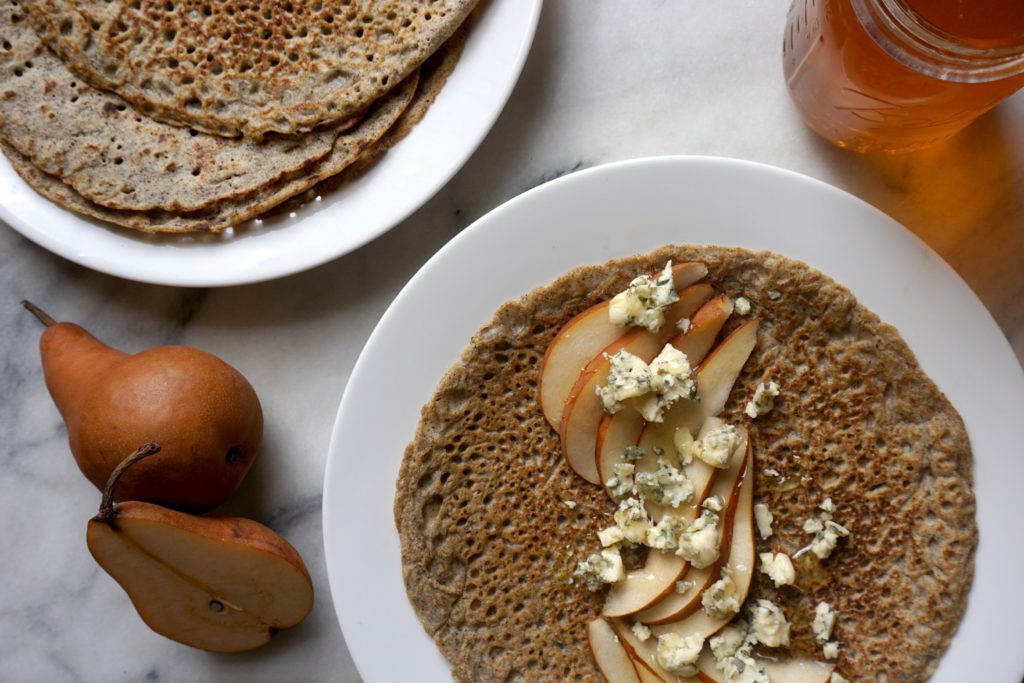
📣 PN Level 2 NOW OPEN: Get better client retention, results, and referrals. Save 44% + BONUS this week.

📣 PN Level 2 NOW OPEN: Get better client retention, results, and referrals. Save 44% + BONUS this week.

Honey is a sweet, viscous liquid produced by bees. It ranges in color and flavor, depending on the floral source, and how it was processed. Therefore, honey can be mild-tasting and pale golden, or it can be dark, rich, and aromatic. Honey is not a significant source of nutrients and is made up primarily of sugars. Honey has a nearly immortal shelf life, and can be used anywhere sweetness is called for.
Honey is a sweet, viscous liquid produced by bees.
Bees gather sugar-rich flower nectar and bring it to their hive, where it gets digested into simple sugars and then regurgitated, many times over. The bees then deposit this processed flower nectar into wax honeycombs. In groups, bees flap their wings to circulate the air around the honeycombs which causes the water to evaporate and the sugars to concentrate. This process of sugar-concentration ensures that the honey resists fermentation. The bees then cap the honey-filled honeycombs with wax, where it will remain until the bees need it for energy, or until it is harvested for human consumption.
Although honey is produced all around the world from a variety of different bees and wasps, most of our honey is produced by honeybees, mostly from China.
Honey comes in many different forms.
Honey can be distinguished by color grade, or by floral source. Honey color scales range from water white to dark amber. Lighter honey tends to be more neutral and milder tasting, whereas darker honey tends to have a more robust flavor, as well as higher antioxidant levels.
Common floral sources found in North America include clover, orange blossom, and buckwheat. When bees only have access to one main flower, the honey produced is distinctive in color, flavor, and aroma, owing to the properties of that specific floral source.
Per tablespoon, honey has 64 calories and 17.3g of sugar. It is not a significant source of any other nutrient. However, honey does contain a small amount of antioxidants (specifically, polyphenols).
Commercial honey is typically pasteurized and comes from a blend of floral sources, and has a mild taste and pale color. This is the honey that is typically found on the shelves of most grocery stores. Pasteurized honey has been heated in order to destroy potential bacteria or yeasts, and also tends to resist crystallization. The pasteurization process also destroys enzymes, trace nutrients, and antioxidants in honey, as well as affects the taste and color. Because pasteurized honey is also highly filtered, it will appear very clear.
Local and imported unpasteurized honey is also widely available in specialty and health food stores, for those who enjoy variety and more nuanced flavors. This honey will be labeled as either “raw” or “unpasteurized”. Raw honey is not filtered or treated with heat and contains trace amounts of beeswax, bee pollen, royal jelly, and propolis, which is why raw honey will appear slightly cloudy. The floral source of the honey will influence the flavor and color of the honey. For example, buckwheat honey is rich and malty, clover honey is mild and lightly floral, and thyme honey is fresh and aromatic.
Creamed honey is honey that has been whipped into a thick, spreadable texture. Honey may even be bought in its original wax honeycomb, called comb honey.
Honey is typically sold in glass jars or plastic squeeze bottles. If the honey appears opaque or crystalized it’s still good, but it may have been sitting on the shelf for a while. Crystallization is a natural process and can be reversed by immersing the sealed container of honey into a bowl of hot water until the honey re-liquifies.
Store honey in a sealed container at room temperature. Storing honey in the fridge will accelerate the crystallization process.
Honey has a shelf life ranging from two years to many centuries, depending on who you talk to. Taking the average, the shelf life of honey is roughly an average human lifetime.
Honey doesn’t require any special preparation. It’s ready to use right out of the jar, and can be used anywhere a sweetener is called for, such as in baked goods, beverages, dressings, or marinades.

This dish, balanced between sweet and savory, makes a delicious breakfast or dinner. Use wildflower honey for a mild, floral sweetness, or buckwheat honey for a bolder, malted flavor.
Prep Time: 15 minutes Cook Time: 20 minutes Yield: 8-12 crepes
First, make the crepe batter: Place flour and salt in a large bowl and stir to combine. In another bowl, whisk together eggs, oil, milk, and water. Add the liquid mixture to the dry mixture and whisk until all the lumps are gone.
Next, cook the crepes: Place a large nonstick skillet over medium-high heat, and drizzle with just enough oil to lightly coat. Add 1/4 cup of batter to the skillet at a time, and rotate the skillet as you pour the batter, so as to coat the entire base of the skillet. Cook the crepe until the edges begin to lift and the bottom turns golden. Then, using a spatula, carefully flip the crepe over, and cook for another 30 seconds or so. You may have to occasionally adjust the heat to prevent burning. Stack cooked crepes onto a plate, and then serve with toppings when all the batter is gone (makes about 8-12 crepes).
To assemble the crepe, arrange pear slices along the center, crumble blue cheese over top, and then drizzle with honey. Fold the sides of the crepes over, and serve. Goes well with a simple side of fresh salad greens and vinaigrette.
Precision Nutrition’s Encyclopedia of Food expands every single month as we highlight new foods and showcase beautiful food photography. If you’d like to stay up to date, simply click this link. From there, we’ll send you a FREE copy of our recipe book. We’ll also let you know when new and delicious foods are added to the site.
Honey is a sweet, viscous liquid produced by bees. It ranges in color and flavor, depending on the floral source, and how it was processed. Therefore, honey can be mild-tasting and pale golden, or it can be dark, rich, and aromatic. Honey is not a significant source of nutrients and is made up primarily of sugars. Honey has a nearly immortal shelf life, and can be used anywhere sweetness is called for.